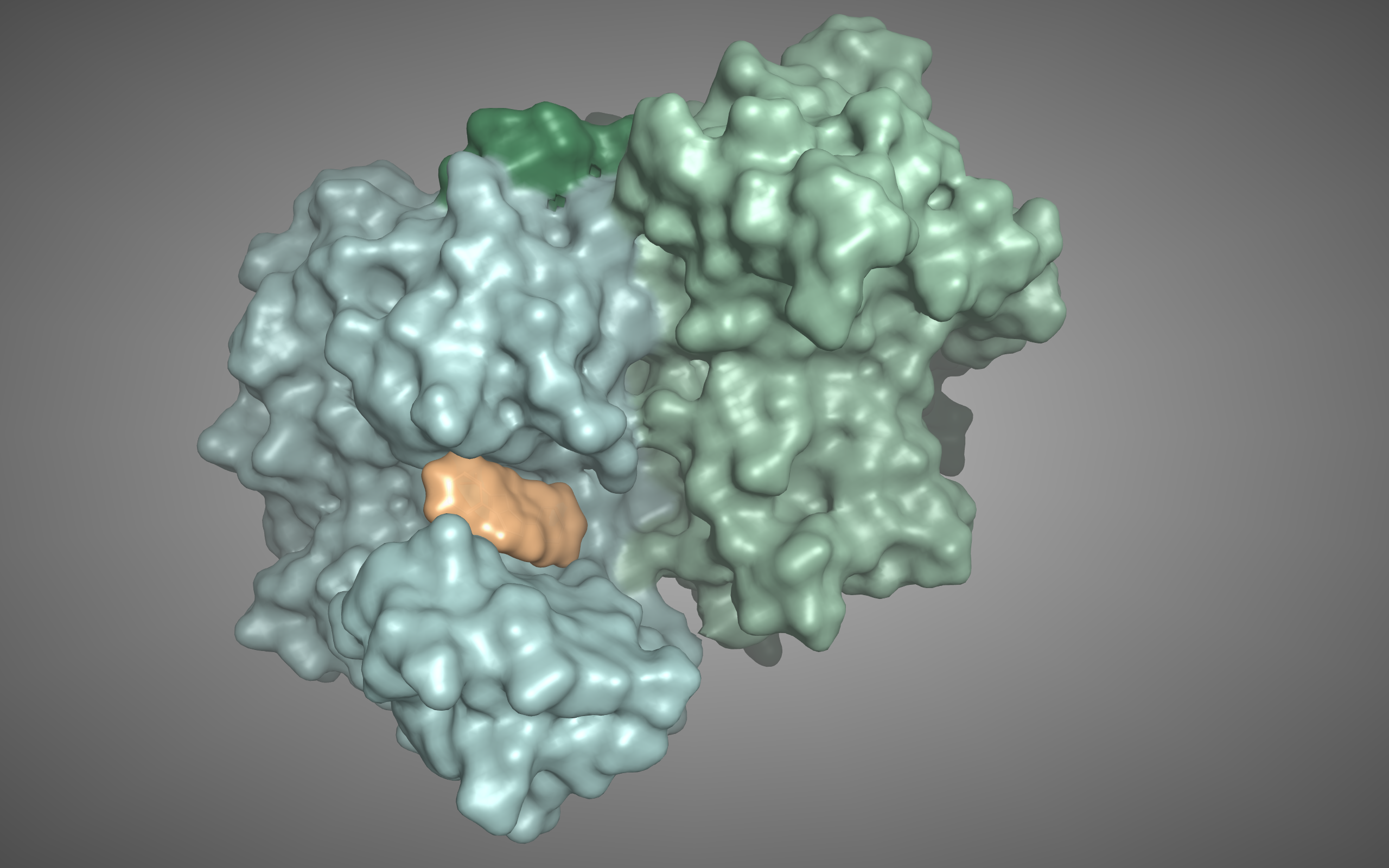Astacin Proteases Unit established at Fraunhofer IZI
On 20th May 2020, the Astacin Proteases junior working group started its work at the Fraunhofer Institute for Cell Therapy and Immunology (IZI). This group, which is headed by Dr Daniel Ramsbeck, primarily focuses on the design and development of meprin inhibitors and the development of ovastacin inhibitors. The research group will be funded by the Investitionsbank Sachsen-Anhalt (using funds from the European Regional Development Fund (ERDF)) for a period of roughly two years.

The astacin family belongs to the proteases, i.e. enzymes that are able to cleave bonds between amino acids. So far, astacins have been found in all living organisms – except for plants. In humans, astacins comprise the bone morphogenetic protein 1 (BMP-1), the meprins α and β, as well as ovastacin. Findings regarding the regulation of astacins through activating factors or inhibitors are important since interruptions in the expression or activity can lead to diseases. In recent years, meprins, in particular, have moved into the focus of drug research and constitute promising drug targets for treating kidney diseases, fibroses – pathological changes in the connective tissues – or even cancers.
The expression of ovastacin was, for example, proven in the ovary and the ovules and is an innovative drug target to treat infertility. At present, such a treatment is very expensive and typically involves hormonal treatment. In contrast, the approach pursued by the Astacin Proteases unit (together with scientists from Johannes Gutenberg-University Mainz) addresses a recently discovered dysregulated mechanism in ovastacin function. This pursues the aim of developing an innovative and non-hormonal treatment option for infertility. In mid-June 2020, the first important findings obtained in these research activities were published in the article ”Primary evaluation of potential small molecule inhibitors of the astacin metalloproteinase ovastacin, a novel drug target in female infertility treatment” by Hagen Körschgen (Johannes Gutenberg-University Mainz), Christian Jäger (Fraunhofer IZI), Kathrin Tan (Fraunhofer IZI) et al. in the renowned journal ChemMedChem, doi: 10.1002/cmdc.202000397.
In addition to research on human proteases, the team around Dr Ramsbeck is also working on astacins from parasitic nematodes. The scientists aim to develop novel substances for treating worm infections. These are initially to be used in veterinary medicine and then, based on this, developed further for treating humans. Among nematodes, which are virtually found everywhere, it is in particular the species found in tropic and sub-tropic regions that can cause serious illnesses in humans. These, e.g., include elephantiasis – a severe lymphoedema which involves massive swelling of testicles, legs and feet – or blindness. Moreover, the global increase in resistances necessitates the development of innovative drugs.
At Fraunhofer IZI, the Astacin Proteases unit can rely on broad expertise in the field of the development of the so-called small molecules. Dr Ramsbeck, who has headed the laboratory of medicinal and peptide chemistry of the Department of Drug Design and Target Validation, the IZI branch in Halle (Saale), since 2013, explains: “We have been very successful in the field of astacin protease inhibitors and, in particular, we have succeeded in developing the first highly selective and active inhibitors of meprin α and β in recent years. We now want to expand this expertise and apply the knowledge developed to other proteases of the astacin family.” In the long run, the researchers at the Fraunhofer IZI site in Halle (Saale) hope to develop new treatment options on this basis. In this process, inhibitors developed by the unit can be characterised further directly on site and examined in terms of their effectiveness, cytotoxicity and further aspects of pre-clinical drug development.
- Unit Astacin Proteases (izi.fraunhofer.de)


